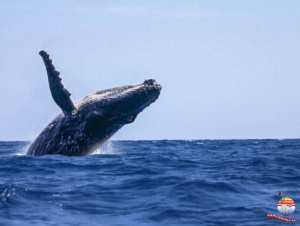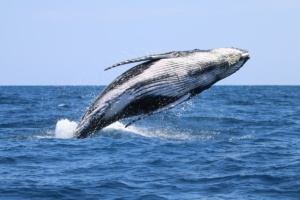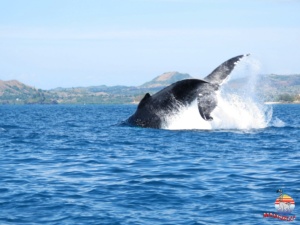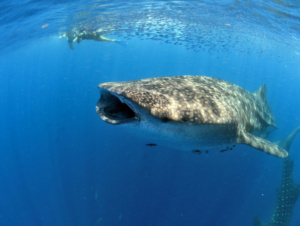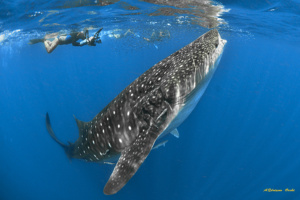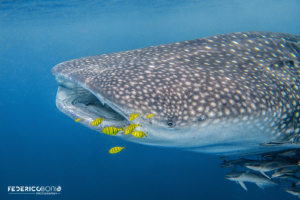BREATHTAKING ENCOUNTERS
WHALE WATCHING
From July, the beginning of the southern winter, until November the seas of Nosy Be experience the thrill of hosting the splendid and gigantic HUMPBACK WHALES
From July, after abandoning the coasts of Antarctica where they feed on krill and having completed a very long migration, the Humpback Whales ( Megaptera novaeangliae ) arrive in Nosy Be to mate and give birth to their young.
They are mammals from 12 to 16 meters long that can weigh from 25 to 40 tons, capable of spectacular acrobatic evolutions in the water and of elaborate songs with which the males court the fertilizable females in an intriguing love game, with melodies repeated and shared by all the whales in the same area, which can be heard while diving.
For whale watching enthusiasts, a trip to Madagascar is one of the few that can give you the unique thrill of seeing these extraordinary marine animals up close. Every boat trip, with an attentive gaze towards the sea, is an exciting wait for that immense tail vertically above the water, that very high breath, those jumps or those caudal or pectoral blows that make the humpback whale, together to the dolphin, the most curious and playful of the Cetaceans.
We look for Humpback Whales – but, why not, also the very rare Omura’s Whale (Balaenoptera omurai), filmed for the first time in 2015 right in Nosy Be -, during excursions, for snorkelling, between a dive and a ‘other, but we also organize specific WHALE WATCHING outings, during which, equipped with a camera, we will hunt for a unique experience.
“Whoever has listened to the song of whales knows that it is not just a call, but a complex set of sounds (shouts, moans, whistles, moans and mysterious bellows), a true «song» among the most ancestral on earth: emotion it is strong because it seems to come from another universe. And it actually belongs to another world, the oceanic one, on which the life of the planet depends” (Carlo Grande)
WHALE SHARK
A SWEET GIANT WITH polka dots
With its maximum length of 18 meters and several tens of tons of weight, the whale shark ( Rhincodon typus ) is the largest fish in the seas and the least dangerous shark.
It is a migratory animal, of a peaceful nature, which inhabits tropical and temperate waters throughout the globe and is easily recognizable due to its large and flat head, its mouth positioned frontally, its grey-green body, covered with a multitude of white polka dots.
In Madagascar it is called Marokintana (“many stars”) because of the white polka dots that make it look like a starry sky under the surface of the sea.
In the waters of Nosy Be (even if it is considered “vulnerable” by the IUCN) it is not uncommon for it to surprise us between one dive and another, especially in the season between October and January, when the whale shark comes to the surface to feed on plankton, giving us the privilege of being able to be next to them.
Sometimes curious, sometimes shy, the luckiest will admire him in a vertical pose while he filters liters of water rich in nourishment.
This shark, in fact, is one of only three existing shark species that feeds by sucking water in the presence of high concentrations of plankton and filtering it with special pads in the gill slits.
WHALE SHARK WATCHING
It will be the food that suggests its presence to us: clouds of sardines that jump out of the water, pushed by the shark towards the surface, constitute a lavish banquet, in which the bonitos also dine and jump and from above seagulls, gannets and frigate birds
Once spotted, it is difficult not to be able to get closer and swim with it on the surface; with a simple mask and a pair of fins, this sweet silent giant will keep “the rhythm of your meeting”… slow and elegant, sinuous and light.
Swimming with the whale shark is an unforgettable experience that we wish for anyone who truly loves the sea!


